The world of pencils is more intricate than it might appear at first glance, especially when understanding the number pencil system.
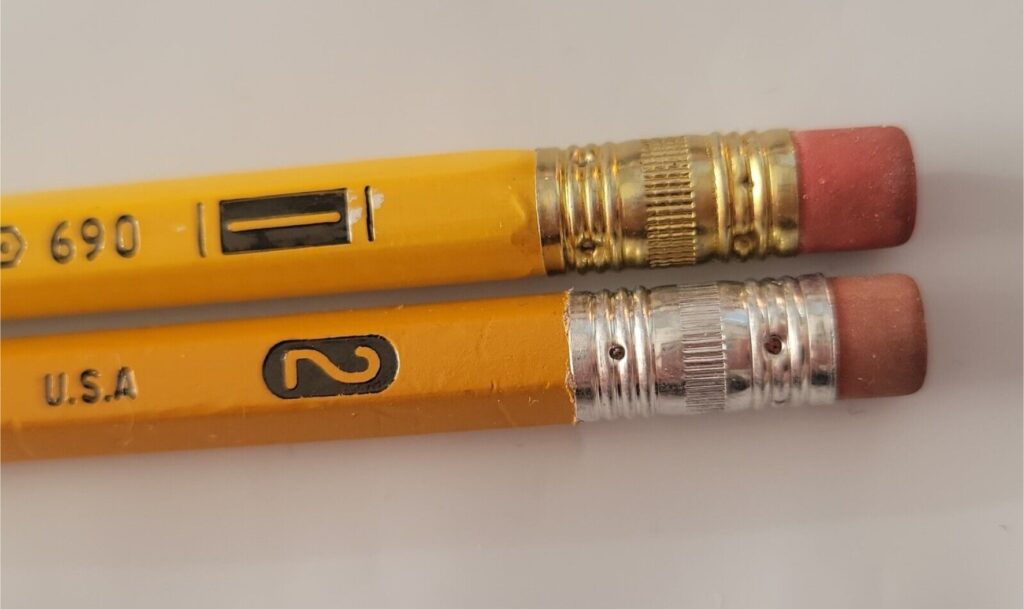
This article delves into the details of the number pencil system, explaining the differences between the various grades and highlighting the specific uses and advantages of the number 1 pencil and number 2 pencil. Knowing the right pencil to use can significantly enhance your work, whether you’re an artist, a student, or a professional.
HB System VS Number System
When choosing the right pencil, two primary grading systems come into play: the HB and number systems. Each system categorizes pencils based on the hardness and darkness of their graphite cores, but they do so in different ways and are used in other regions.

The HB pencil system is said to have originated in Europe in the early 19th century and was developed by the German company Faber-Castell. It was designed to give artists and writers a more precise grading scale.
The number system emerged in the United States around the same time. It was meant to simplify the selection process for consumers, particularly for school and office use.
Both systems continue to be used today, catering to different regional preferences and needs for precision in writing and drawing tasks.
Number Pencil System
The Number Pencil System is a method of grading pencils based on the hardness of their graphite core, commonly used in the United States. This system ranges from #1 to #4, each number indicating a different level of hardness and darkness in the pencil marks.
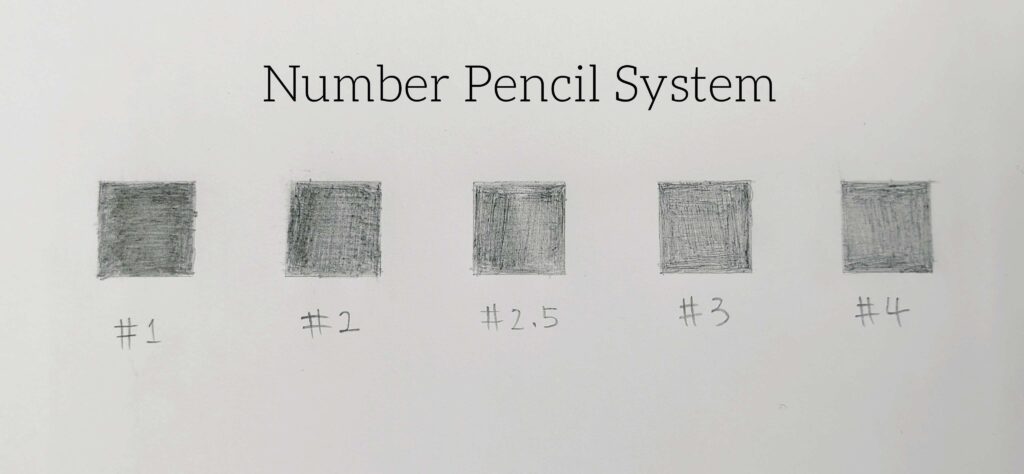
- #1 Pencil: Softer graphite, producing darker and bolder marks. It is ideal for artistic work and tasks requiring visible, dark lines.
- #2 Pencil: Medium hardness, balancing darkness and durability. They are widely used for general writing and standardized tests.
- #2.5 Pencil: Slightly more complicated than a #2 pencil, but still maintains a balance between darkness and durability. It helps write tasks that require finer lines and more precision.
- #3 Pencil: Harder graphite, resulting in lighter marks. Suitable for drafting and technical drawing where fine, precise lines are needed.
- #4 Pencil: Very hard graphite, producing very light marks. Best for highly detailed technical drawings and work requiring sharp, light lines.
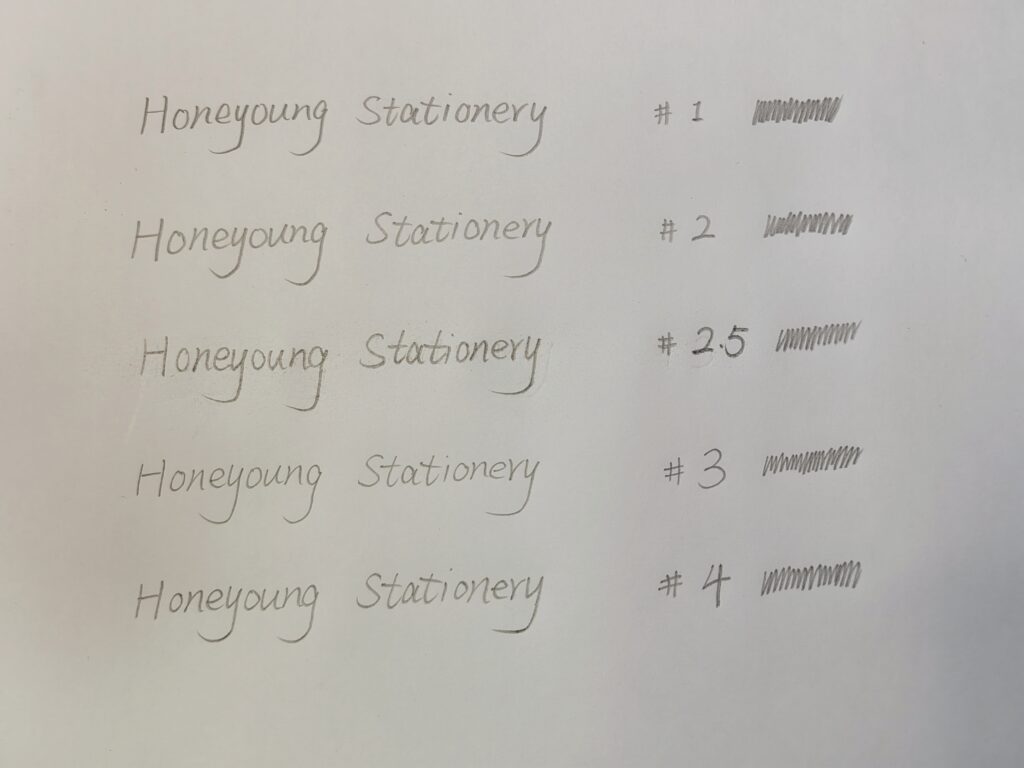
HB Pencil System
The HB system is used primarily in Europe and Asia to grade pencils based on the hardness of the graphite. The scale ranges from H (hard) to B (black), with HB sitting in the middle as a standard writing pencil. Here’s a brief breakdown:

- H Pencils and up: Harder graphite, lighter marks. The higher the number, the more complex the pencil (e.g., 2H, 3H).
- B Pencils and up: Softer graphite, darker marks. The higher the number, the softer and darker the pencil (e.g., 2B, 3B).
- HB Pencils: Medium hardness and darkness, ideal for general writing and drawing.
To learn more about the HB pencil system, click Graphite Pencil Scale: A Comprehensive Guide.
| Feature | HB Pencil System | Number Pencil System | Region of Use | Primarily Europe and Asia | Primarily United States | Grading Scale | Uses letters and numbers (e.g., H, HB, B, 2H, 2B) | Uses numbers (e.g., #1, #2) | Hardness Range | 9H (hard) to 9B (black) | #1 (softest) to #4 (hardest) | Standard Writing Grade | HB (middle hardness and darkness) | #2 (middle hardness and darkness) required for many standardized tests | Common Uses | Art, technical drawing, general writing | General writing, standardized tests, drafting | Popularity | Popular globally | Widely used in the U.S., especially in schools |
|---|
Number System and Their Uses
The Number System for grading pencils offers a straightforward way to identify the hardness and darkness of a pencil’s graphite core. Widely used in the United States, this system categorizes pencils from #1 to #4, each number representing a different grade. Understanding the Number System and its uses can help you select the perfect pencil for your writing, drawing, or drafting needs.
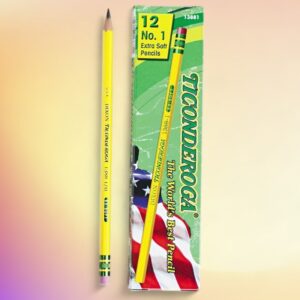
#1 Pencil
Graphite Hardness: ★☆☆☆
Mark Darkness: ★★★★
Uses:
Ideal for artistic sketches and shading
Great for tasks that require darker, more visible lines
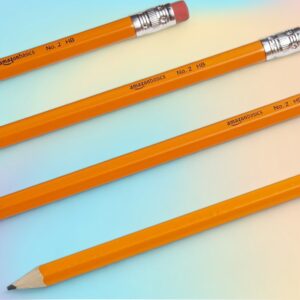
#2 Pencil
Graphite Hardness: ★★☆☆
Mark Darkness: ★★★☆
Uses:
Standard pencil for writing and general use
Widely used in schools for tests and homework
(including standardized tests like the SAT)
Suitable for everyday writing tasks and note-taking
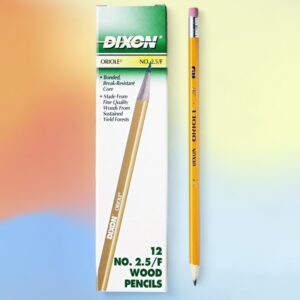
#2.5 Pencil
Graphite Hardness: ★★☆☆
Mark Darkness: ★★☆☆
Uses:
Ideal for writing tasks that require finer lines and more precision
Suitable for detailed note-taking and technical writing
Provides a balance between the smoothness of #2 pencils
and the precision of #3 pencils
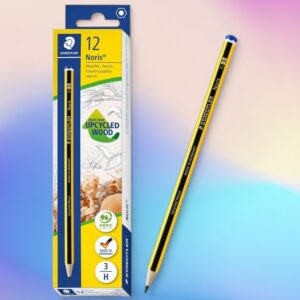
#3 Pencil
Graphite Hardness: ★★★☆
Mark Darkness: ★★☆☆
Uses:
Suitable for drafting and technical drawing
It is ideal for tasks that require finer, lighter lines
Suitable for making precise marks in architectural or engineering work
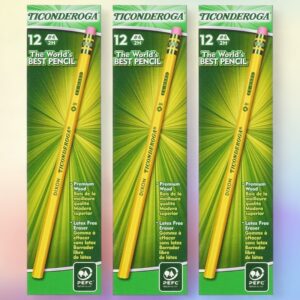
#4 Pencil
Graphite Hardness: ★★★★
Mark Darkness: ★☆☆☆
Uses:
Excellent for technical, detailed drawings and blueprints
Used in fields that require excellent, light lines, such as
certain types of graphic design and fine art detailing
Suitable for tasks requiring durable, long-lasting points,
like writing on glossy or smooth surfaces
The Number System provides a simple yet effective way to choose the right pencil for various tasks. Whether you need a soft, dark pencil for sketching or a complex, light pencil for technical drawing, the Number System offers a range of options to suit your needs.
How to Buy Number 1 Pencil And other
Choosing the right pencil can significantly impact the quality of your writing, drawing, or technical work. Here’s a step-by-step guide on how to buy number 1 pencils, including considerations for different uses and where to purchase them:
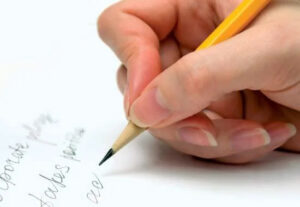
Determine Your Needs
Writing: For general writing, homework, and standardized tests, a #2 pencil is ideal.
Drawing: Artists may prefer number 1 pencils for darker, bolder lines or #2 for sketching.
Technical Drawing: A #3 or #4 pencil is more suitable for precise, light lines.

Understand the Grading
The hardness of the graphite in a pencil determines the darkness of the mark it makes; softer graphite, such as that in number 1 pencils, creates darker marks, while more rigid graphite, like in #4 pencils, produces lighter marks.
Softer pencils tend to smudge more easily and wear down faster, requiring frequent sharpening, whereas harder pencils are more durable and less prone to smudging.
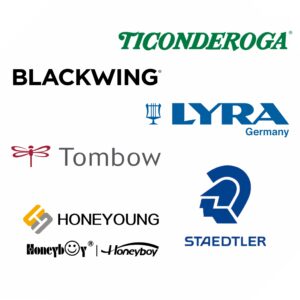
Choose a well-known Brand
Popular brands include Dixon Ticonderoga, Faber-Castell, Staedtler, and others. These brands are known for their quality and consistency.
To know more about these pencil brands, click here: Top 7 Pencil Brands You Should Know.
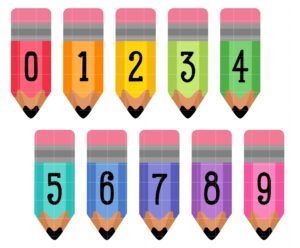
Decide on quantity
Single Pencils: Ideal if you want to try out different grades.
Packs: Buying in bulk can be more economical and ensures you always have a pencil on hand.
Sets: Some sets include a range of grades helpful for artists and professionals.

Where to Buy
Online Retailers: Various online platforms offer a wide selection of pencils, allowing you to compare prices and read reviews.
Office Supply Stores: These stores typically carry a variety of number pencils suitable for both general use and professional needs.
Art Supply Stores: For high-quality art pencils, specialized art supply stores provide an extensive range of options.
Department Stores: Many department stores stock a range of pencils in their school supply sections, offering convenience and accessibility.

Additional Tips
Check Reviews and Ratings
Reading customer reviews can help you determine the quality and performance of the number 1 pencils you’re considering.
Consider Eco-Friendly Options
Look for pencils made from sustainable materials or recycled content if you are environmentally conscious.
By following these steps, you can confidently choose the suitable number of pencils that meet your specific needs, whether for writing, drawing, or technical applications.
FAQ
Why are #2 pencils required for standardized tests?
#2 pencils have the right balance of hardness and darkness, making their marks easily readable by optical scan machines that grade standardized tests. Their graphite is soft enough to leave a clear mark but hard enough to prevent smudging.
How do the darkness and hardness of #1 and #2 pencils compare?
Number 1 pencils are softer and have darker marks than number 2 pencils, which have a more complex graphite core and produce lighter marks.
How do I sharpen a pencil properly?
Use a good-quality pencil sharpener, either manual or electric, to ensure a clean and even point. For artist pencils, a knife or a special pencil sharpener for art supplies can be used to control the shape and length of the lead.
Can pencil marks be erased?
Pencil marks can be erased with a good-quality eraser, but the ease of erasure depends on the hardness of the pencil. Softer pencils (B, 2B) leave darker marks that can be harder to erase, while harder pencils (H, 2H) leave lighter marks that are easier to remove.
Are there eco-friendly pencil options?
Yes, there are eco-friendly pencils from recycled materials, sustainable wood sources, or even recycled paper.
If you want more kinds of pencils, you can go through Honeyoung, a stationery supplier.
What is the core of a pencil made of?
The pencil’s core often called the “lead,” is a ” mixture of graphite and clay. Despite being called “lead,” it contains”no actual lead. The graphite provides the marking ability, while the clay determines the hardness of the core.
How does the graphite-clay ratio affect pencil hardness?
The hardness of a pencil is determined by the ratio of graphite to clay in the core. More graphite results in a softer, darker pencil (e.g., B pencils), while more clay results in a more complex, lighter pencil (e.g., H pencils).
Is there any hazardous material in pencils?
Modern pencils do not contain hazardous materials. Historically, the term “pencil lead” came from t, “the use of lead in early writing instruments, but today’s pencitoday’snon-toxic graphite and clay. High-quality pencils are made with non-toxic materials that are safe for everyday use.




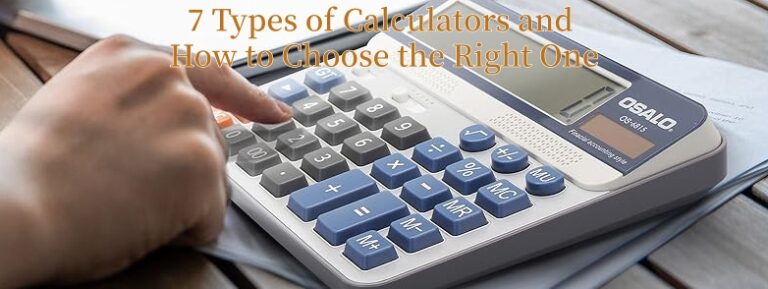
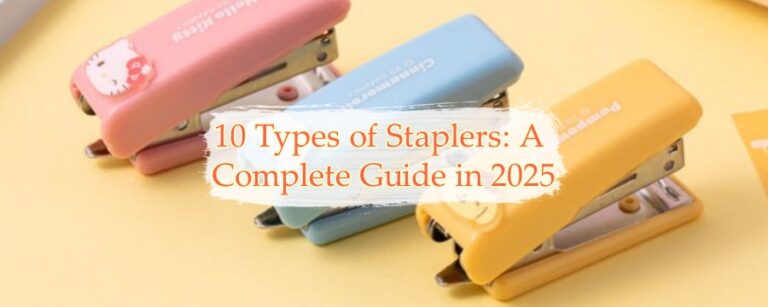


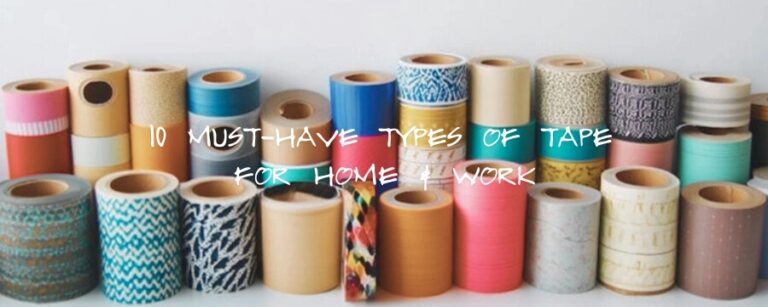
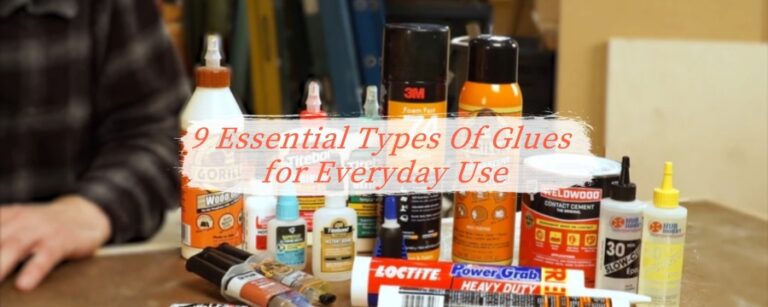
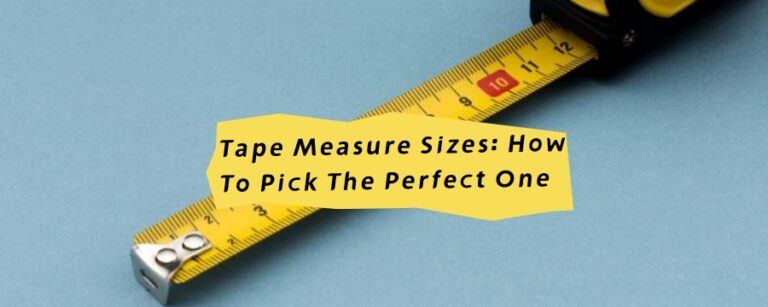
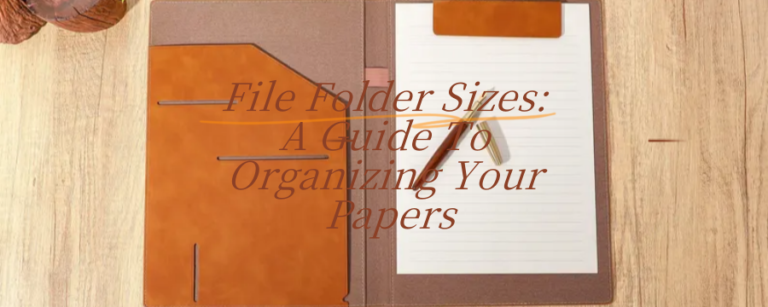

One Response
I run a stationery store and many customers ask me the difference between No. 1 pencils and No. 2 pencils.